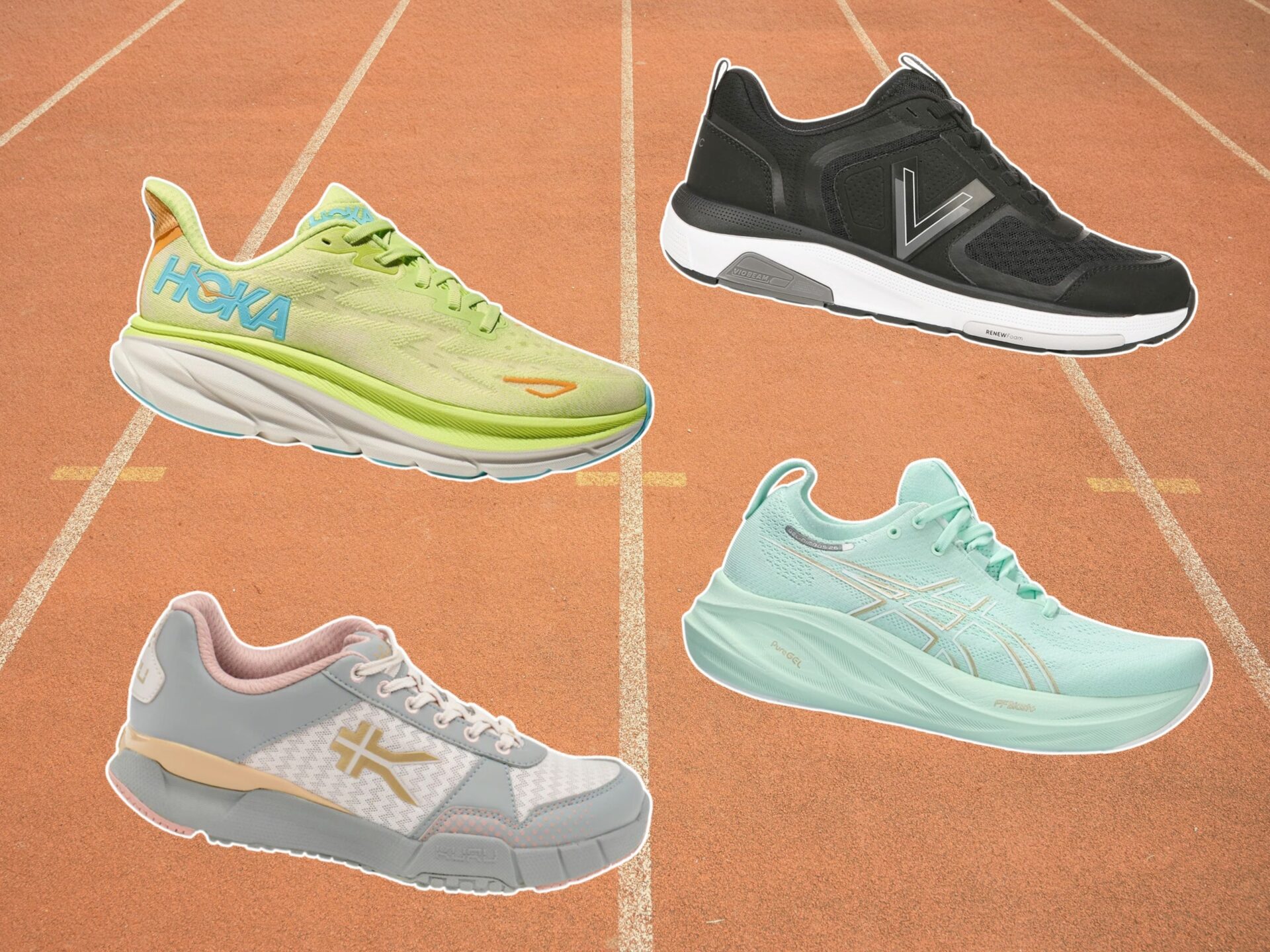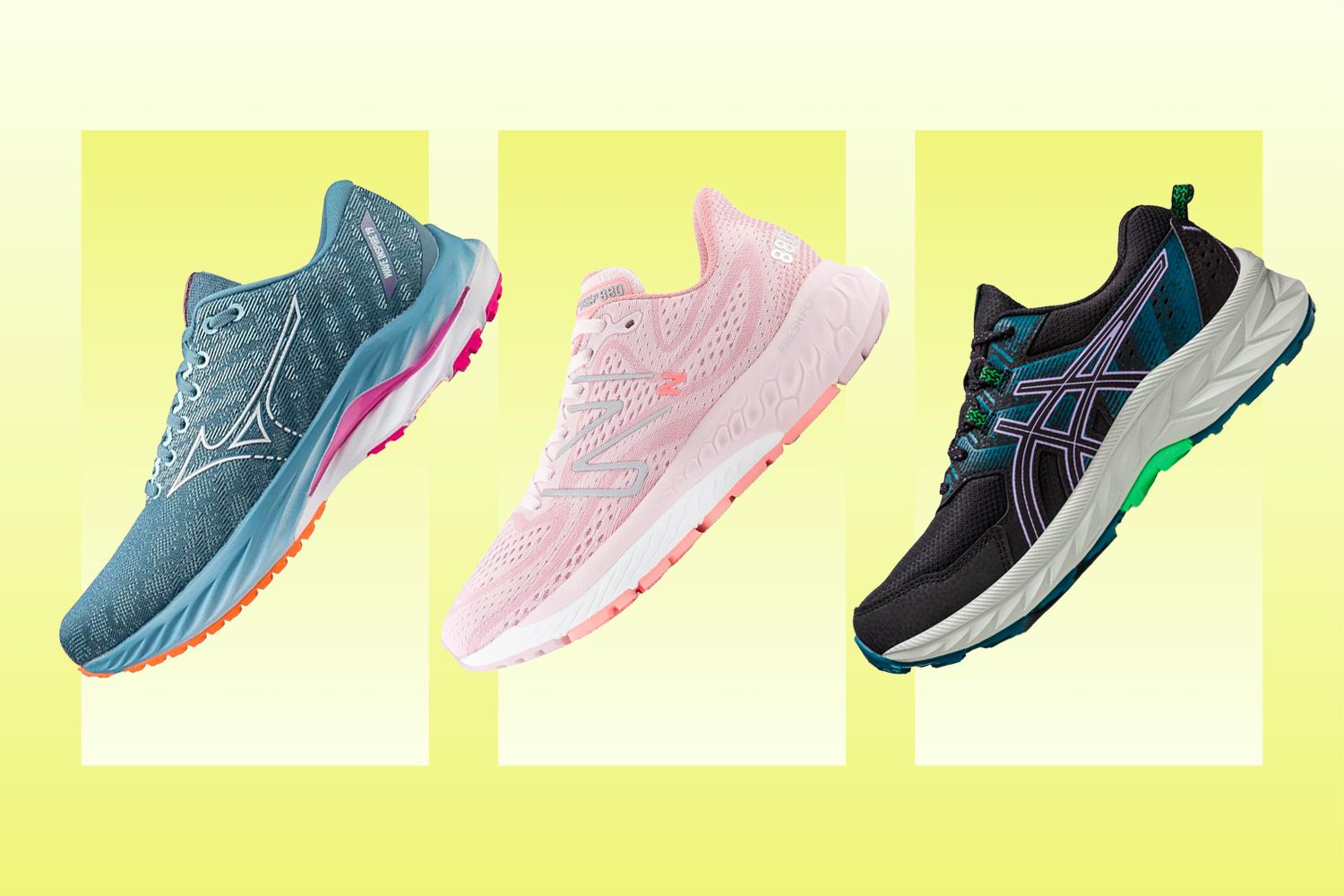Plantar fasciitis causes pain in the heel. Many people suffer from this condition. It is important to choose the right shoes. The right shoes can help reduce pain. They can also provide support. This article will help you find the best shoes for plantar fasciitis.

Credit: www.self.com
What is Plantar Fasciitis?
Plantar fasciitis is a common foot problem. It happens when the plantar fascia becomes inflamed. The plantar fascia is a thick band of tissue. It runs from the heel to the toes. When this tissue is strained or overstretched, it can cause pain.
Many factors can lead to plantar fasciitis. These include:
- Being overweight
- Standing for long periods
- Wearing improper footwear
- High arches or flat feet
People with plantar fasciitis often feel pain in the morning. The pain may decrease throughout the day. However, it can return after long periods of standing or walking.
Why Shoes Matter
Choosing the right shoes is vital for comfort. The wrong shoes can worsen plantar fasciitis. Good shoes provide support. They can help distribute weight evenly. This reduces stress on the plantar fascia.
Here are key features to look for:
- Arch Support: Good shoes should have strong arch support.
- Cushioning: Shoes should have enough padding for comfort.
- Heel Height: A slightly elevated heel can help.
- Fit: Shoes must fit well, not too tight or loose.

Credit: www.shape.com
Doctor Recommended Shoe Types
Not all shoes are made the same. Some types are better for plantar fasciitis. Here are the main types of shoes to consider.
Running Shoes
Running shoes are designed for support. They often have good cushioning. This helps absorb shock. Look for brands known for arch support.
- Asics Gel-Kayano
- Brooks Adrenaline GTS
- Nike Air Zoom Pegasus
Walking Shoes
Walking shoes are also a great option. They provide comfort for everyday use. Good walking shoes often have flexible soles and support.
- Skechers Go Walk
- New Balance 990
- Brooks Addiction Walker
Sandals
Summer shoes need to be supportive too. Sandals can be comfortable if they have good support. Look for sandals with arch support and cushioning.
- Birkenstock Arizona
- Teva Mush II
- Chaco Z/Cloud
Dress Shoes
You may need dress shoes for work or events. It is still important to find supportive options. Look for shoes with low heels and good support.
- Clarks Unstructured
- Vionic Women’s Kitten Heel
- Dansko Professional Clog
Tips for Choosing the Right Shoes
Finding the right shoe can be tricky. Here are some tips to help you choose.
- Try shoes on at the end of the day. Your feet may swell.
- Walk around the store. Make sure they feel comfortable.
- Bring your orthotics if you use them. Make sure they fit well.
- Don’t choose shoes based on looks alone. Comfort is key.
When to Replace Your Shoes
Shoes wear out over time. Worn-out shoes can cause more pain. Here are signs you need new shoes:
- You feel more pain than usual.
- The soles are worn out or uneven.
- The shoes feel less supportive.
Other Ways to Manage Plantar Fasciitis
Shoes are important, but they are not the only solution. Here are some other ways to manage plantar fasciitis:
- Stretch your feet and calves. This helps relieve tension.
- Use ice on your heel. Ice can reduce swelling.
- Wear orthotic inserts. They provide extra support.
- Consider physical therapy. A therapist can help you strengthen your feet.
Conclusion
Finding the right shoes is crucial for managing plantar fasciitis. Doctor recommended shoes can help ease your pain. Make sure to look for good arch support, cushioning, and a proper fit. Also, consider other treatments to manage your condition.
Remember to listen to your body. If your shoes cause more pain, it may be time to find new ones. With the right footwear and care, you can improve your comfort. Don’t let plantar fasciitis hold you back. Take the steps today to find the right shoes.
Frequently Asked Questions
1. What Should I Look For In Shoes For Plantar Fasciitis?
Look for arch support, cushioning, and a good fit.
2. Can I Wear Flip-flops With Plantar Fasciitis?
It is better to avoid flip-flops. They lack support.
3. How Often Should I Replace My Shoes?
Replace shoes every 300 to 500 miles or when worn out.
4. Are There Specific Brands Recommended For Plantar Fasciitis?
Yes, brands like Asics and Brooks are often recommended.
5. Can I Manage Plantar Fasciitis Without Shoes?
While shoes help, stretching and physical therapy are also important.















Leave a Review